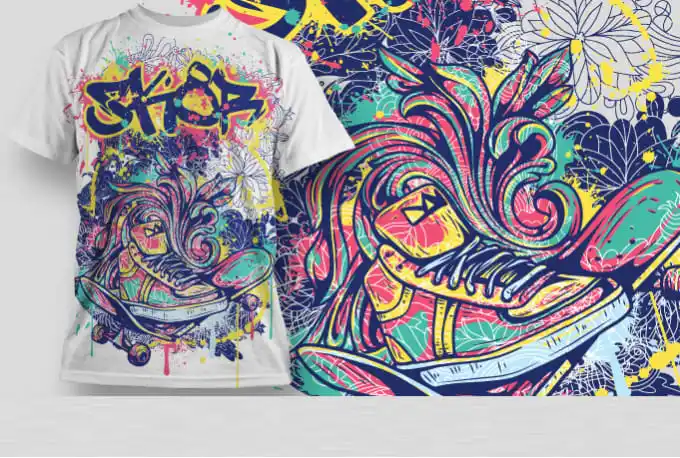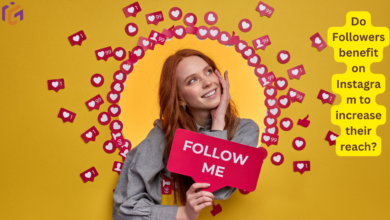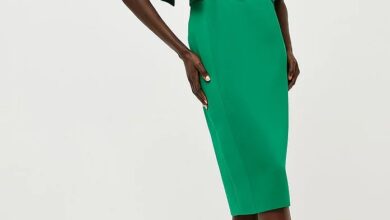The Art of Designing for Shirt Printing: A Guide to Unleashing Your Creativity

Have you ever wondered about the creative spark of shirt design? As there is no denying, t-shirts are a fascinating and attractive staple in everyone’s wardrobe. With the increased demand for personalization, custom type of shirt printing has become common. T-shirt design holds the center place, whether it’s an iconic logo or the aesthetic color print, they have the power to evoke emotion or simply tell a unique story to the world.
But before grabbing your favorite shirt, understand there is an art to designing for shirt printing that goes beyond aesthetics. So, let’s start the inspiring journey of t-shirt design. This guide will mention the key considerations from the concept creation to ensure the design translates flawlessly onto the shirt.
Understanding the T-shirt Design Basics
T-shirt designing is a fascinating place where design concepts are transformed into reality. But before going further into the t-shirt design it is crucial to understand the basics of the t-shirt design. When starting onto the creation journey know your audience and design concept first such as considering factors such as age, gender, and interest to ensure the design can be translated well into the final creation.
Additionally, further clarifies the vision and message of the design. Pay attention to the placement, size, and composition to create a balance between the concept and the message of the design. Lastly, take practicality into consideration including printability, and production limitations to ensure your design concept can be accurately printed onto your t-shirt. By considering these factors, you can easily make a shirt that stands out in the t-shirt world.
Know Your Printing Option
The first step is acknowledging and knowing the limitations and possibilities of different printing methods. However, the selection of printing methods is considered best if cost, appearance, production time, and material are considered clearly and precisely. The more you have taken this method into account the easier it will become for you to select one.
- Screen Printing
It is a renowned and widely used printing technique in the apparel industry. It can be simply done by pressing the stenciled mesh screen which squeezes the ink onto the fabric. However, different meshes are required for the multicolored print, resulting in bold designs and simple details. Screen printing is an effective technique for creating bold posters, artwork, or even different types of shirt print, but this method can be used to print the fabric in larger quantities.
- Digital Printing
Digital printing can be done by using inkjet technology to transfer the print onto the fabric. This specialized printing method limits the large production run just like screen printing, it can be great for mid or small-run cycle production.
Meanwhile, the process begins with the pretreatment of fabric with liquid solutions after the ink is sprayed through the printer, which sprays the dye onto the fabric with tiny droplets. This printing method provides a quick, easy, durable print, which is hard to obtain through the other printing method.
- Heat Transfer Printing
This method involves transferring the design onto the various fabrics using heat and pressure. Although heat transfer printing can produce high-quality prints for small orders with the right tools and specialized transfer paper, it can not have the same brightness as other techniques.
- Direct-to-Garment Printing (DTG)
Direct-to-garment printing may be similar to digital printing but differ in method and cost. DTG uses the printer to transfer the ink onto the fabric, offering excellent detail and photo-realistic effect which is impossible to achieve with the different process. However, this method might be less cost-effective for larger quantities.
Select the Designing Element
Choosing the design element is crucial for your t-shirt printing. For example, artists greatly emphasize the small details of the shirt, just like your design element should comment on the chosen printing method. If you are looking for bold stuff and a few colors, go for screen printing with strong shapes and text. But if you have lots of details or photos, digital printing (DTG) is better. Don’t forget that every part of your design, like fonts or pictures, is important for making your t-shirt look just right.
Style and Imagery
T-shirts have various design styles from minimalist to grunge, illustrative, retro, futuristic, and more. So, when you are selecting the style of the shirt it is crucial to think about what your target audience is. What is your brand vision?
Your design style could be a single genre or a blend of more, resulting in a unique blend that reflects your personality. Explore the other styles or check out the fellow brand design, this will give you the idea that resonates with your brand and target audience.
Also, remember the image is being displayed on a shirt that isn’t large and small enough to view. Consider the clear and simple design and place it in the correct position rather than going to any area where your design gets unpleasant to the eyes.
Color
Colors are the foremost element in the design of the t-shirt. They can add elements, shape perception, and create a unique rhythm to the t-shirt design. Understanding the basics of color is essential for delivering the concept. Screen printing excels with limited colors due to the thick layering of colors on the fabric, whereas DTH and digital printing offer great flexibility to print on a broader range. The heat transfer method can also work with the complex design.
Text and Graphics
Graphics and text are essential elements in the design of t-shirts. These components, which may be used to display artwork or deliver a message, should be thoughtfully selected and arranged to improve the shirt’s overall visual attractiveness. To guarantee readability and visual impact, take into account elements like font style, size, and location. Clear, sharp graphics should draw the viewer in without becoming overbearing. For a design to be interesting, the text-to-graphic ratio must be just perfect.
Furthermore, simplicity often carries significant power. Through thoughtful choices, a t-shirt design transforms into a conversation starter, allowing the carefully curated text and graphics to effectively convey the message.
Find a Designer
If you are getting confused about your skills and looking for more detail and customized look then it’s good to hire a designer. Do you know what a designer can actually do? Working with a designer might help to speed up the design process and guarantee that the end result matches your expectations. So look for a designer who is competent and easily matches the business goals.
Conclusion
In sum, t-shirt designing is a fascinating journey, for making the design stand out you must have to understand the basics. In this blog post, we have compiled the essential considerations that should be taken into account before starting to design the shirt. This is sure to make the design that not only meets your desired concept but also with the fashion world.



